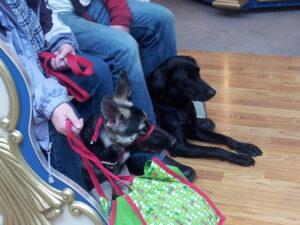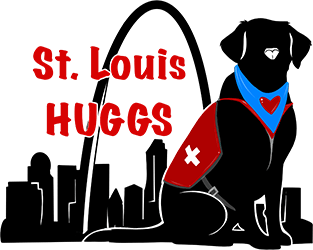Introduction:

Service dogs play a vital role in the lives of individuals with disabilities, providing essential assistance and support. When encountering a service dog and their handler, it is crucial to behave appropriately and respectfully. This blog post aims to highlight key etiquette tips to ensure a positive and harmonious interaction with service dogs and their handlers.
Avoid distracting the Service Dog:
Service dogs are highly trained to focus on their tasks and assist their handlers. Avoid actions that may distract or divert the dog’s attention, such as making sudden movements, loud noises, or attempting to engage the dog in play. Respect their work environment and allow them to concentrate on their responsibilities.
Always approach the handler first:
When you encounter a service dog team, it is important to direct your attention and communication towards the handler rather than the dog. Address any questions or concerns to the handler, who can provide guidance and information about the dog and its role.
Keep your own dog at a safe distance:
If a pet dog accompanies you, ensure that you maintain a safe distance from the service dog. This helps prevent any unnecessary interactions or distractions between the dogs. Respecting their space allows the service dog to focus on its handler’s needs.
Do not feed the Service Dog:
Service dogs have specific dietary requirements and feeding schedules determined by their handlers and trainers. It is essential not to offer them treats or food without explicit permission from the handler. Respect their routine and avoid interfering with their health and well-being.
Understand the distinction between service dogs and therapy/emotional support animals:
Service dogs are trained to perform specific tasks to assist individuals with disabilities, while therapy dogs and emotional support animals have limited roles and no legal protection. Recognize that only service dogs are granted public access rights and should be treated accordingly.
Respect a napping Service Dog:
Service dogs may rest or nap during their working hours. Even when they are not actively engaged in tasks, they are still on duty. Avoid approaching, touching, or attempting to wake a napping service dog, as this could disrupt their rest and compromise their ability to assist their handler when needed.
If approached by a Service Dog without its handler, follow appropriately:
In rare instances, a service dog may approach you without its handler present. This could indicate an emergency or a situation where the handler requires assistance. Stay calm, follow the dog, and seek help or alert the nearest authority if necessary.
Ask permission before petting the Service Dog:
While service dogs are often well-behaved and friendly, it is crucial to ask the handler’s permission before petting or interacting with the dog. Some service dogs have specific tasks to focus on and petting them without permission can disrupt their work and the handler’s needs.
Remember that the Service Dog is working:
Service dogs are highly trained professionals, and their primary focus is to assist their handlers. Avoid treating them as pets or attempting to engage them in play. Respect their role, professionalism, and the important support they provide to their handlers.
Conclusion:
When encountering a service dog and its handler, practicing proper etiquette is essential to ensure the well-being of the dog and the handler’s accessibility. By following these etiquette tips, we can create a respectful and inclusive environment that acknowledges the vital role of service dogs and supports individuals with disabilities. Let us foster a culture of understanding and consideration for the valuable work performed by these remarkable animals and their handlers.
